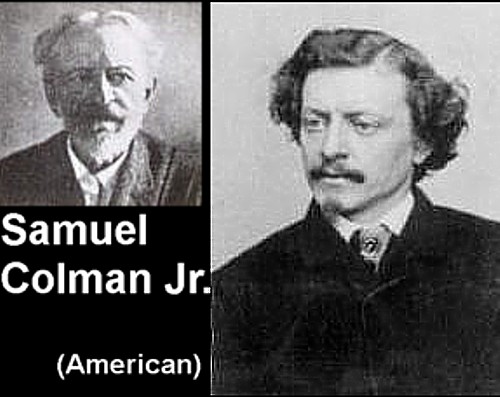 |
| Picturesque Landscape with Rainbow, Samuel Colman |
A little over three years ago, I began to write a piece on the American painter, Samuel Colman. In the process I began to encounter paintings which, for all the world, looked to have been done by two different artists, though all were attributed to Samuel Colman (not Coleman). It took me several perplexing minutes to come to the realization that they were, in fact, painted by two different painters. Both had the same first and last names with the strange spelling of the family name, and both painted landscapes. There any similarities ended. One Samuel Colman was British, born in 1780, and whom died in 1845. The other was an American landscape painter born in New York City in 1832. This left me with the quandary as to which one to pursue. I chose the British painter in that his life and work seemed far more interesting than his American counterpart (an opinion I've not changed, by the way).
 |
| By the 1860s, the Hudson River was no longer picturesque. |
 |
| Ships Unloading, New York, Samuel Colman |
 |
| Ausable River, Samuel Colman |
 |
| Colman in the 1860s and shortly before his death in 1920. |
 |
| American landscape art and artists moved westward after the Civil War. |
 |
| Colman found the exotic Mediterranean area even more enticing than the American west. |
 |
| Along the Arno, Florence, Italy ca. 1875, Samuel Colman |
No comments:
Post a Comment